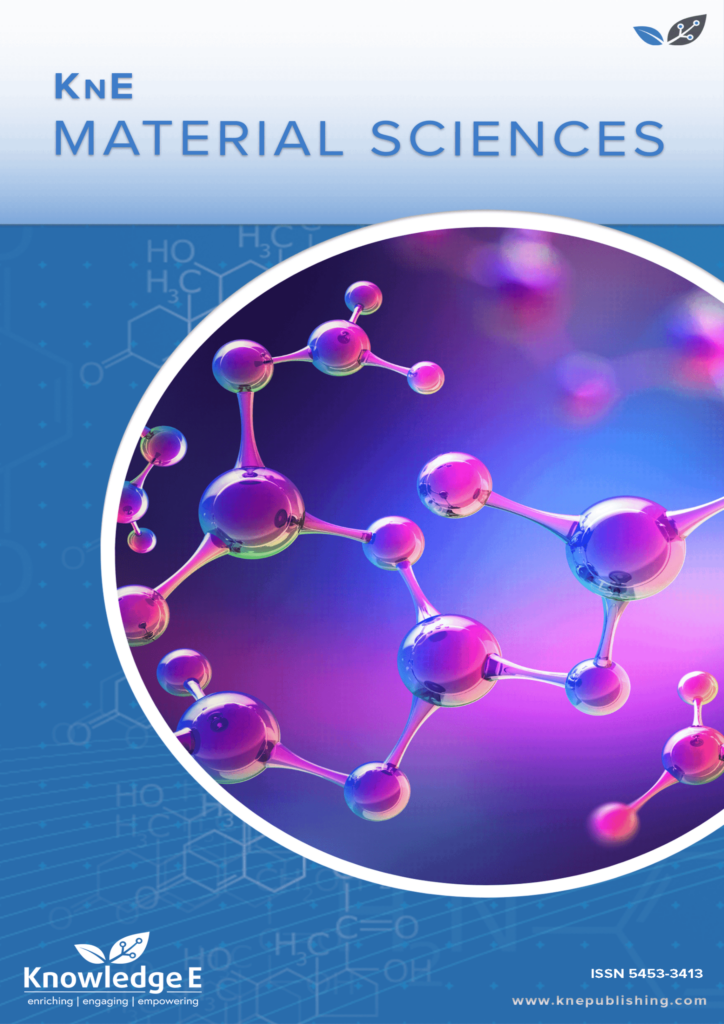
KnE Materials Science
ISSN: 2519-1438
The latest conference proceedings on physical materials, energy materials, electrical materials.
Treatment of Industrial Effluents by the Microalgae Selenastrum Sp.
Published date: Aug 10 2022
Journal Title: KnE Materials Science
Issue title: 1st International FibEnTech Congress (FibEnTech21) – New Opportunities for Fibrous Materials in the Ecological Transition
Pages: 126–135
Authors:
Abstract:
High consumption of clean water results in the generation of effluents that need to be treated and then safely discarded. Conventional methods for such treatment often do not offer an economical and sustainable result; therefore, new methods are needed, such as microalgae usage. Microalgae are unicellular beings capable of rapid adaptation, growth, and production of compounds of interest (pharmaceuticals, biofuels and others). This work aimed to study the effectiveness of the microalgae Selenastrum sp. in the treatment of effluents from the textile and pulp & paper industries, as well as the respective effects on its biomass development and accumulation of compounds. Four types of culture were carried out (for each type of effluent, a control, and a control with addition of glucose) lasting eight days, in duplicate, all with the addition of a standard culture medium and controlled abiotic factors. Analyses for compound removal (chemical oxygen demand and colour readings on the 200–800nm range) and biomass development (cell number, its dimensions, and weight) were performed four times during the process. At the end of the experiments, the average removal in effluents for COD and colour were 56.6% and 32.7% respectively, in addition to a biomass accumulation of 0.45 g/L. These results were comparable to those obtained for the control cultivation using glucose as a carbon source (70.0% COD removal and 0.51 g/L biomass accumulation). These results demonstrate the effectiveness of Selenastrum sp. in the treatment of industrial effluents, its resilience in stressful environments and the potential use of its accumulated compounds for biotechnological purposes.
Keywords: microalgae, Selenastrum sp., industrial effluent, textile effluent, pulp effluent, effluent treatment
References:
[1] General Assembly resolution 70/1, Transforming our world: the 2030 Agenda for Sustainable Development, A/RES/70/1 (25 September 2015), available from undocs.org/A/RES/70/1.
[2] Sudhakar MP, Kumar BR, Mathimani T, Arunkumar K. A review on bioenergy and bioactive compounds from microalgae and macroalgae-sustainable energy perspective. Journal of Cleaner Production. 2019;228:1320–1333.
[3] Silva A. Valorização do efluente tratado da indústria papeleira em usos compatíveis [Dissertation for obtaining the master’s degree in Environmental Engineering - Sanitary Engineering Profile]. Portugal: Universidade Nova de Lisboa, Caparica; 2019.
[4] Batista M. Tratamento eletroquímico de efluentes têxteis reutilização de efluentes têxteis em novos tingimentos [Dissertation for obtaining the master’s degree in industrial chemistry]. Portugal: Universidade da Beira Interior; 2015.
[5] Kamali M, Khodaparast Z. Review on recent developments on pulp and paper mill wastewater treatment. Ecotoxicology and Environmental Safety. 2015;114:326–342.
[6] Yaseen DA, Scholz M. Textile dye wastewater characteristics and constituents of synthetic effluents: A critical review. International Journal of Environmental Science and Technology. 2019;16:1193–1226.
[7] El-Kassas HY, Mohamed LA. Bioremediation of the textile waste effluent by Chlorella vulgaris. Egyptian Journal of Aquatic Research. 2014;40:301–308.
[8] Lim SL, Chu WL, Phang SM. Use of Chlorella vulgaris for bioremediation of textile wastewater. Bioresource Technology. 2010;101:7314–7322.
[9] Gentili FG. Microalgal biomass and lipid production in mixed municipal, dairy, pulp and paper wastewater together with added flue gases. Bioresource Technology. 2014;169:27-32.
[10] Usha MT, Chandra TS, Sarada R, Chauhan VS. Removal of nutrients and organic pollution load from pulp and paper mill effluent by microalgae in outdoor open pond. Bioresource Technology. 2016;14:856–860.
[11] Daneshvar E, Ok YS, Tavakoli S et al. Insights into upstream processing of microalgae: A review. Bioresource Technology. 2021;329: Article 124870.
[12] Chioccioli M, Hankamer B, Ross IL. Flow cytometry pulse width data enables rapid and sensitive estimation of biomass dry weight in the microalgae Chlamydomonas reinhardtii and Chlorella vulgaris. PLoS One. 2014;9(5): Article e97269.
[13] Chakravarty S, Mallick N. Biomass and bioenergy optimization of lipid accumulation in an aboriginal green microalga Selenastrum sp. GA66 for biodiesel production. Biomass and Bioenergy. 2019;126:1–13.
[14] Aratboni AH, Rafiei N, Garcia-Granados R, Alemzadeh A, Morones-Ramírez JR. Biomass and lipid induction strategies in microalgae for biofuel production and other applications. Microbial Cell Factories. 2019;18:1–17.
[15] Ananthi V, Brindhadevi K, Pugazhendhi A, Arun A. Impact of abiotic factors on biodiesel production by microalgae. Fuel. 2021;284: Article 118962.